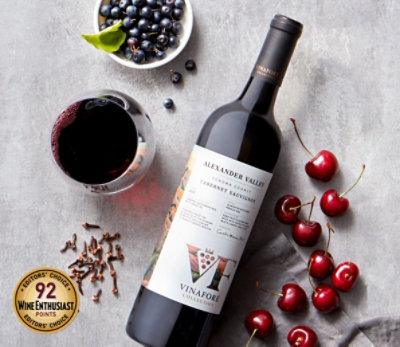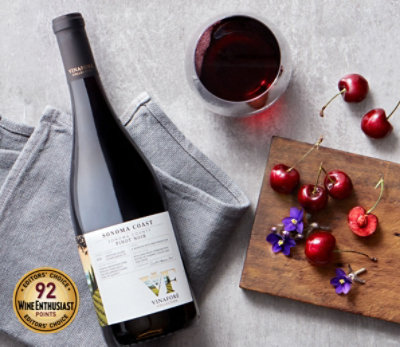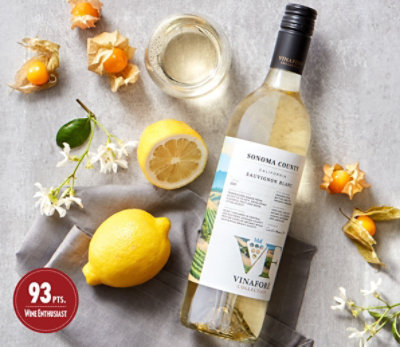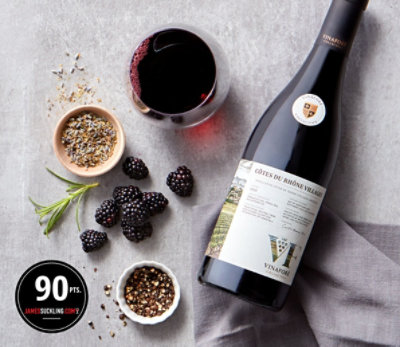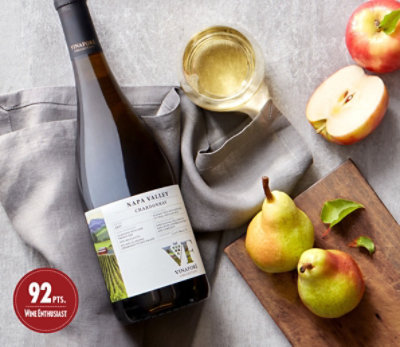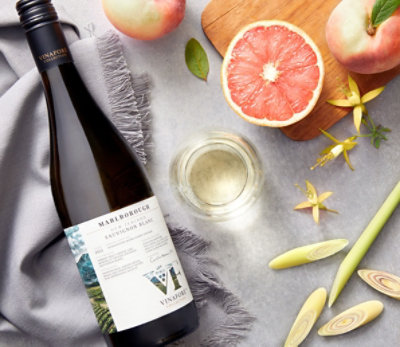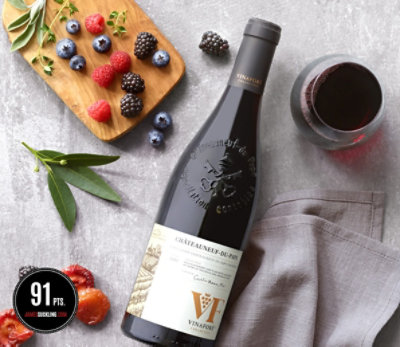Vinaforé® Alexander Valley Cabernet Sauvignon
Taste Profile
Elegant European style with the power of California fruit. Notes of cassis and black cherry aromas are followed with clove and spice flavors. The lush and lingering mouthfeel is followed with fine grain tannins and a lengthy finish.
Region: Alexander Valley, California
The Alexander Valley is located in northern Sonoma County along the Russian River. The soils are deep alluvial in nature with veins of gravel and rock throughout. The climate is warm but frequently will experience cool, foggy nights. These swings in temperature create grapes with bright character and balance. Cabernet Sauvignon is the dominate variety in the Alexander Valley but is joined by Zinfandel, Sauvignon Blanc, Chardonnay, and other lesser varietals. Cabernet Sauvignon harvest in the Alexander Valley usually starts in early October and runs well into the month.
Winemaking
Vinaforé® Alexander Valley Cabernet Sauvignon is made from a single vineyard source in the heart of the Alexander Valley sub-appellation of Sonoma County. The blend consists of 94% Cabernet Sauvignon and 6% Petit Verdot. The Petit Verdot is utilized as a classical Bordeaux varietal to create depth and posture to the Cabernet Sauvignon.
The two varietals were fermented separately to maintain varietal integrity. Upon harvest, the grapes were crushed to a stainless-steel tank and cold soaked for 48 hours prior to starting the fermentation. Vigorous pump-overs occurred during this winemaking phase to allow for maximum color and flavor components and minimal tannin extraction. The fermentation lasted for 12 days never exceeding 80 degrees temperature with minimal pump-overs to create a more elegant structure. Upon completion of fermentation, the resulting free run wine was drained from the skins, and the must was pressed separating out any hard press to avoid harsh tannins and bitterness. Once malolactic fermentation was completed the wines were blended and aged with a combination of 65% new tight grained French oak and 35% neutral oak for 16 months.
Pairing Suggestion
Steak au poivre, braised escarole or hard cheeses.







